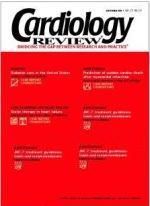Treating heart failure after acute MI: Are ACE inhibitors better than ARBs?
The angiotensin-converting enzyme (ACE) inhibitors are a well-established treatment for significantly reducing mortality in patients with heart failure or systolic dysfunction after an acute myocardial infarction (MI). Patients have difficulty tolerating this treatment over the long term, however, with at least one quarter of them discontinuing treatment because of adverse effects. In addition, the production of some angiotensin II continues even with ACE inhibitor therapy. Thus, the antagonism of angiotensin II at the receptor level using an angiotensin receptor blocker (ARB) in addition to an ACE inhibitor, or as a solo agent, has been explored.
In the Optimal Trial in Myocardial Infarction with the Angiotensin II Antagonist Losartan (OPTIMAAL), Dickstein and Kjekshus (page 23) found that the ARB losartan was better tolerated but clearly not superior to the ACE inhibitor captopril.1 The optimal dose of losartan may not have been used, however, and the slow up-titration of losartan also may have contributed to the early mortality benefit seen with captopril. All other secondary end points (reinfarction, stroke, etc) were not significantly different.
The recently reported Valsartan in Acute Myocardial Infarction Trial (VALIANT) compared the ARB valsartan, 160 mg twice daily (titrated rapidly), with the dose of captopril used in OPTIMAAL (50 mg three times daily).2 The patient population was similar to that in OPTIMAAL. The VALIANT study also included a third arm, which received combination treatment with the same dose of captopril and a lower dose of valsartan (80 mg twice daily).
Unlike OPTIMAAL, the VALIANT results showed that the ARB was as effective as the ACE inhibitor in reducing mortality in post-MI patients. At these doses, the incidence of adverse events was nearly equal in the valsartan and captopril groups, although fewer patients in the valsartan group had an adverse event leading to permanent discontinuation of treatment.
Conclusion
Based on the results of these two trials, it seems reasonable to consider treatment with ARBs in post-MI patients with systolic dysfunction. Although ACE inhibitors may remain the first-line therapy because of cost and the experience practitioners have with their use, ARBs are a proven, safe, and effective alternative for patients who cannot tolerate ACE inhibitors.These studies also reinforce the fact that study results are dependent on the dosage used. All too often, clinical results are translated into clinical practice without emphasis on the proper drug dosage. Drugs that were proved effective in clinical trials may not offer the same level of protection at lower doses. Evidence-based practice includes using the proper drug at the proper dose. Whether lower doses produce the same benefit is not known, and there may be a false sense of security in using ACE inhibitors at a low dose. n
